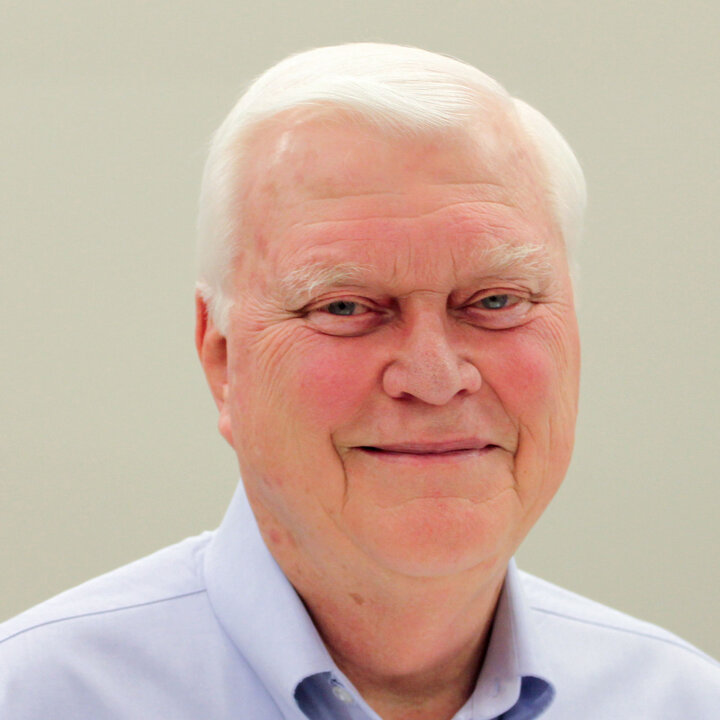
James Stubbendieck
Professor Emeritus (Grassland Ecology) and Emeritus Director, Center for Great Plains Studies Agronomy and Horticulture University of Nebraska-Lincoln
Contact
- Address
-
KEIM 309
Lincoln, NE 68583-0915 - Phone
-
402-472-1519 On-campus 2-1519
Area of Focus: Grassland Ecology
Education
B.S., Agronomy (Conservation), University of Nebraska
M.S., Agronomy (Range Management), University of Nebraska
PhD., Rangeland Ecology and Management, Texas A&M University
Research Interests
Ecology of grassland plant communities, influences of prescribed burning on native vegetation and target woody species, long-term and historical vegetation changes, ecology and propagation of endangered plant species.
Courses Taught
- PLAS 440/AGRO 840 (Range Science 440) - Great Plains Ecosystems
- PLAS 442/AGRO 842 (Range Science 442) - Wildland Plants
- PLAS 444/ AGRO 844 (Range Science 444) - Vegetation Analysis
Major Project Activities
Long-term ecological research on prairie ecosystems in Nebraska is the major emphasis of the grassland ecology research project. Responses of the vegetation to continuing changes in the environment are collected annually from plots delineated in the Sandhills in 1926. The recent dry cycle followed by average precipitation resulted in numerous shifts in abundance of plant species.
Work continues on a cooperative project initiated in 1981 with Dr. Thomas Bragg, University of Nebraska at Omaha, to determine the influences of frequency and season and frequency of prescribed burning and mowing on restored tallgrass prairie vegetation. Patterns of succession in Sandhills blowouts are being mapped in another long-term study. The objective of this study is to model plant community succession and dynamics of Sandhill blowouts. Using remote sensing tools, we are delineating blowout occurrence and change, especially with respect to topography and climate patterns.
Work continues on the ecology, propagation, and recovery of blowout penstemon (Penstemon haydenii S. Wats.). This spectacular Sandhills wildflower is the only Nebraska plant on the Federal Endangered Species List. Research and recovery associated with this project have increased plant numbers to a level that qualifies it for reclassification to Threatened. The US Fish and Wildlife Service is using data generated by this project in a review of the status of the classification. Recent work has concentrated on analyzing the influences of wind and sandblasting on seedling growth and how seeding depth affects germination and emergence. These data will help to quantify the seed bank and potential expansion of this species.
In another phase of the seed bank studies, an undergraduate student working on a UCARE project is determining the viability of blowout penstemon seeds collected over the past 28 years and stored under different conditions. Correlations between climatic variations and abundance of blowout penstemon for the last 23 years are being examined. Research to determine seed production of wetland plants in relation to grazing is being conducted in wetlands in the Rainwater Basin of Nebraska.
This work is a continuation of a project that explored innovative ways to restore wetlands with grazing. Dr. Heidi Hillhouse (Post-Doctoral Research Associate) and Cheryl Dunn (Grassland Ecology Research Technologist) are staff associated with the project. Graduate students include Barbara Kagima (Ph.D.), Luis Ramirez (Ph.D.), Michelle Koch (M.S.), Cortney Schuler (M.S.), and Sal Palazzolo (M.S.). Sammi Bray is an undergraduate student working on a UCARE project.
Publications
- Stubbendieck, James, and Susan J. Tunnell. 2008. Seventy-eight years of vegetation dynamics in a Sandhills grassland. Natural Areas Journal (in press).
- Stubbendieck, James, and Kay L. Kottas. 2007. Common forbs and shrubs of Nebraska. EC 118. University of Nebraska Extension, Lincoln (in press).
- Stubbendieck, James, Kay L. Kottas, and Jay B. Fitzgerald. 2007. Transplanted seedlings enhance populations of endangered blowout penstemon (Nebraska). Ecological Restoration 25:224-225.
- Volesky, Jerry D., James Stubbendieck, and Rob B. Mitchell. 2007. Conducting a prescribed burn and prescribed burn checklist. EC-121, University of Nebraska Extension, Lincoln. 15 pages.
- Anderson, Bruce, and James Stubbendieck. 2007. Conduction a prescribed burn on warm-season grass CRP sites. NebGuide G1649 University of Nebraska Extension, Lincoln. 3 pages.
- Stubbendieck, James, Jerry Volesky, and John Ortmann. 2007. Grassland management with prescribed burning. EC148, University of Nebraska Extension Service, Lincoln. 6 pages.
- Tunnell, Susan J., J Stubbendieck, Sal Palazzolo, and Robert A. Masters. 2006. Reducing smooth sumac dominance in native tallgrass prairie. Great Plains Research 16:45-49.
- Tunnell, Susan J., James Stubbendieck, Robert Manasek, and Gary Willson. 2006. Restoration of threadleaf sedge at Scotts Bluff National Monument. Park Science 24:48-50.
- Stubbendieck, James, and Kay L. Kottas. 2005. Common grasses of Nebraska. EC05-170, University of Nebraska Extension, Lincoln. 123 pages.
- Stubbendieck, James, Stephan L. Hatch, and L. M. Landholt. 2003. Wildland plants of North America. University of Nebraska Press, Lincoln. 512 pages.
- Stubbendieck, James, Mitchell J. Coffin, and L. M. Landholt. 2003. Weeds of the Great Plains. Nebraska Department of Agriculture, Lincoln. 605 pages.
- Stubbendieck, James, L. M. Landholt, Gina R. Tichota, and Timothy L. Griffin. 2003. Restoration of Carex filifolia in the Great Plains. VII International Rangeland Congress, Durban, South Africa.
- Tichota, Gina R., and James Stubbendieck. 2002. Germination of threadleaf sedge (Cyperaceae: Carex filifolia). Transactions of the Nebraska Academy of Sciences 28:15-20.
- Stubbendieck, James, Gina R. Tichota, and Timothy L. Griffin. 2002. Greenhouse-grown plants fare better than plugs in threadleaf sedge transplant experiments (Nebraska). Ecological Restoration 20:220-221.
- Willson, Gary D., and James Stubbendieck. 2002. Soil moisture and temperature differences between burned and unburned smooth brome- and big bluestem-dominated sites. Prairie Naturalist 32:79-82.
- Willson, Gary D., and James Stubbendieck. 2000. A burn-based model for smooth brome management in degraded tallgrass prairie. Restoration Ecology 18:43-38.
- Caha, Carol A., Donald J. Lee, and James Stubbendieck. 1998. Organellar genetic diversity in Penstemon haydenii (Scrophulariareae): An endangered species. American Journal of Botany 85:1704-1709.
- Ortmann, John, James Stubbendieck, Robert A. Masters, George Pfeiffer, and Thomas B. Bragg. 1998. Efficacy and cost of controlling eastern redcedar. Journal of Range Management 51:158-163.
- Ortman, John, Walter H. Schacht, James Stubbendieck, and Dennis Brink. 1998. The "Foliage is the Fruit" hypothesis: Complex adaptations in buffalograss (Buchloe dactyloides). American Midland Naturalist 140:252-263.